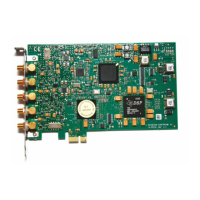178
Transmission Modes WAVECOM Decoder W74PC, W-PCI/e, W-CODE, W-CLOUD Manual V9.1.0
62.5 Bd per carrier (max. 32 carriers)
LSB/USB (automatic polarity recognition)
AFC, Adaptive number of carriers, compression
GW-OFDM-Modulation and Protocol
GlobeWireless-OFDM employs a dynamic increase and decrease in the number of OFDM carriers; the num-
ber of carriers can vary between 12 and 32. Each carrier is modulated with DQPSK.
The main specifications of GW-OFDM are:
12 to 32 subcarriers
DQPSK modulation
62.5 Hz subcarrier spacing (symbol duration 16ms)
Cyclic prefix / guard interval duration 2ms
700-2700 Hz occupied bandwidth
Pilot tone for synchronization and frequency tracking
The system ensures error free data exchange with an ARQ protocol – if a reception error occurs, the in-
formation receiving station (IRS) can request the retransmission of the corrupted packet from the infor-
mation sending station (ISS). To reduce the peak-to-average power ratio, a scrambler is used. Different
compression algorithms are used to achieve efficient data throughput.
Decoder
There are long packets containing data and short packets containing control or request information for the
ARQ process.
The decoder can recognize and decode the following packet types:
Frame with Acknowledge(ACK) or
Not Acknowledge(NAK)
ISS requests to become IRS
ISS indicates end of Transmission
IRS acknowledges end of trans-
mission
Contains selcall of the calling sta-
tion
RQ, FORCED OVER and END ACK are short packets. The others are long packets.
The decoded packet types are shown in the upper status bar.
In the next lower status bar the following information is shown:
Number of carriers/channels
For long packets: Number of channels with CRC OK and CRC FAILED
For RQ packets: Number of channels with ACK, NAK, and wrongly decoded channels (UNKN)
Due to the compression employed by GW-OFDM, decoded data is not available until the end of a transmis-
sion. The end of a transmission is indicated by an END or END ACK packet, or after a timeout of several
seconds. After a transmission ends, the decoded data packets are put together and further processed to a
text file which contains information about the transmitting station and which can further contain com-

